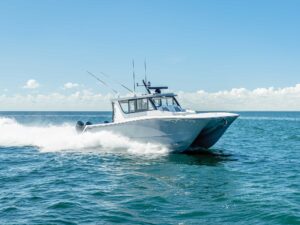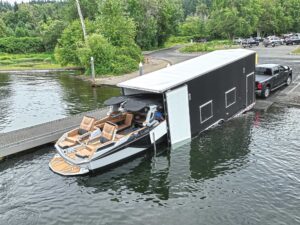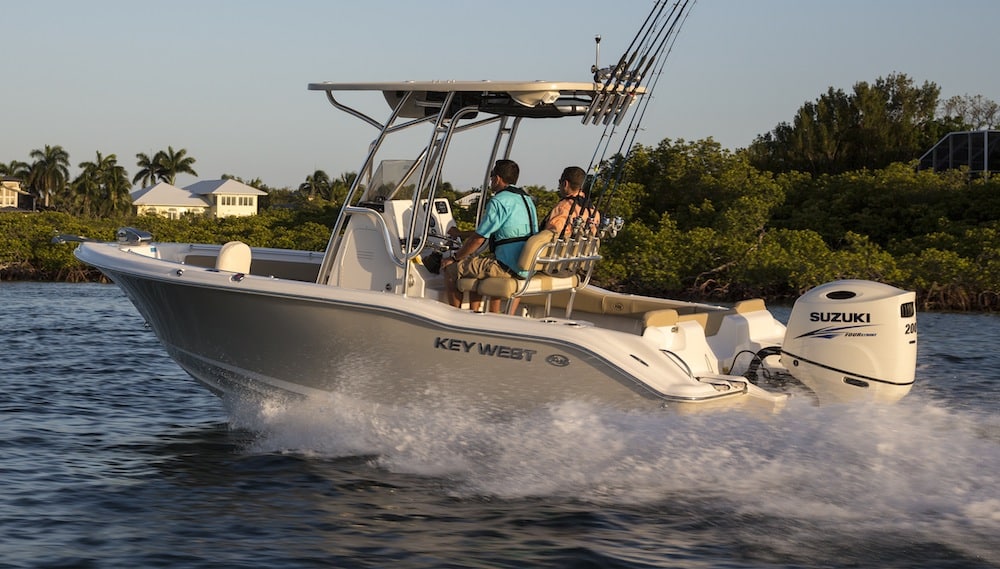
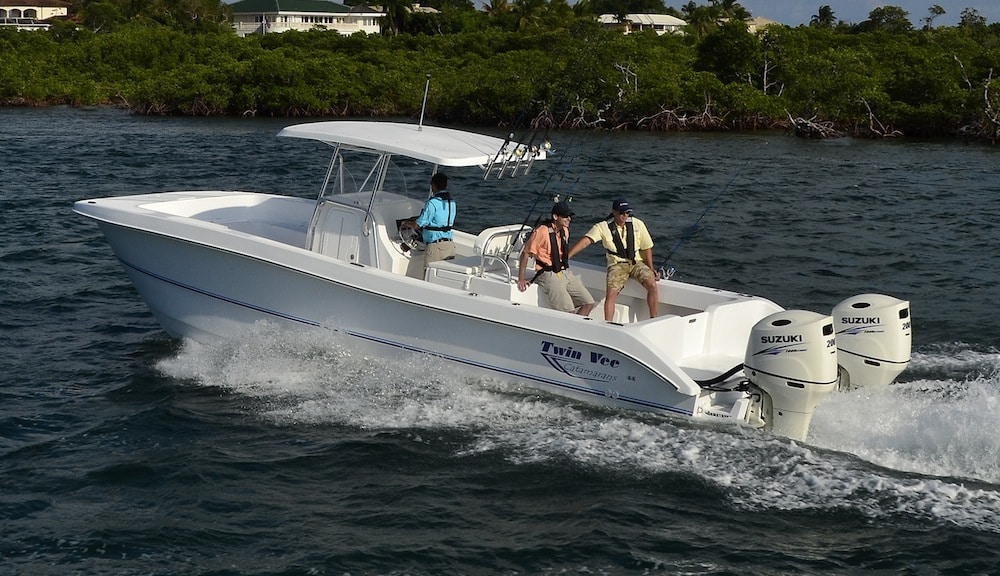
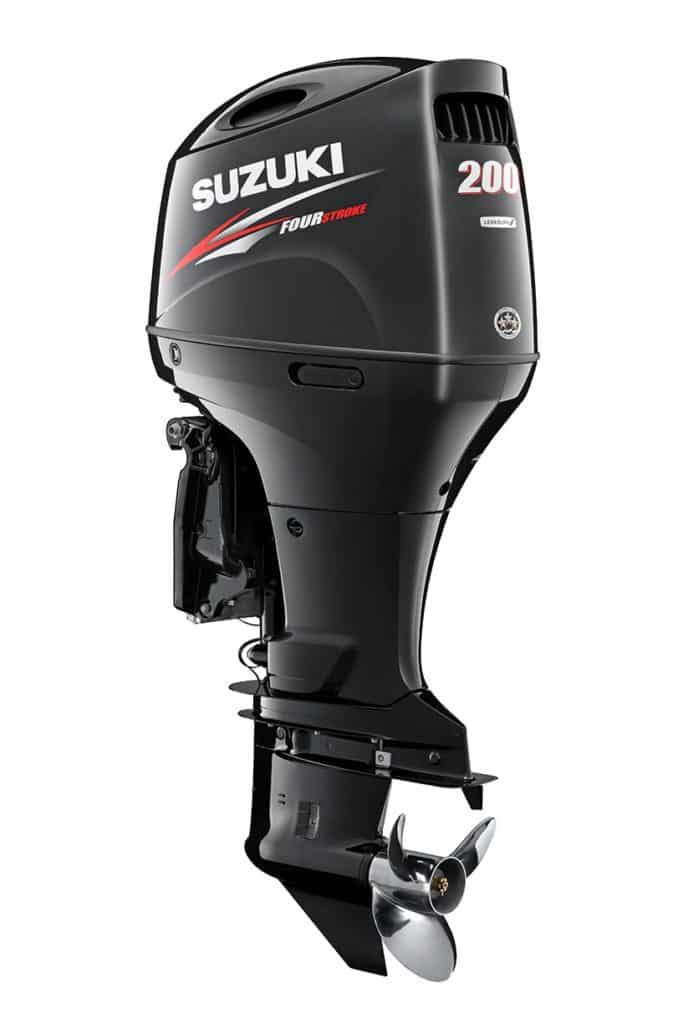
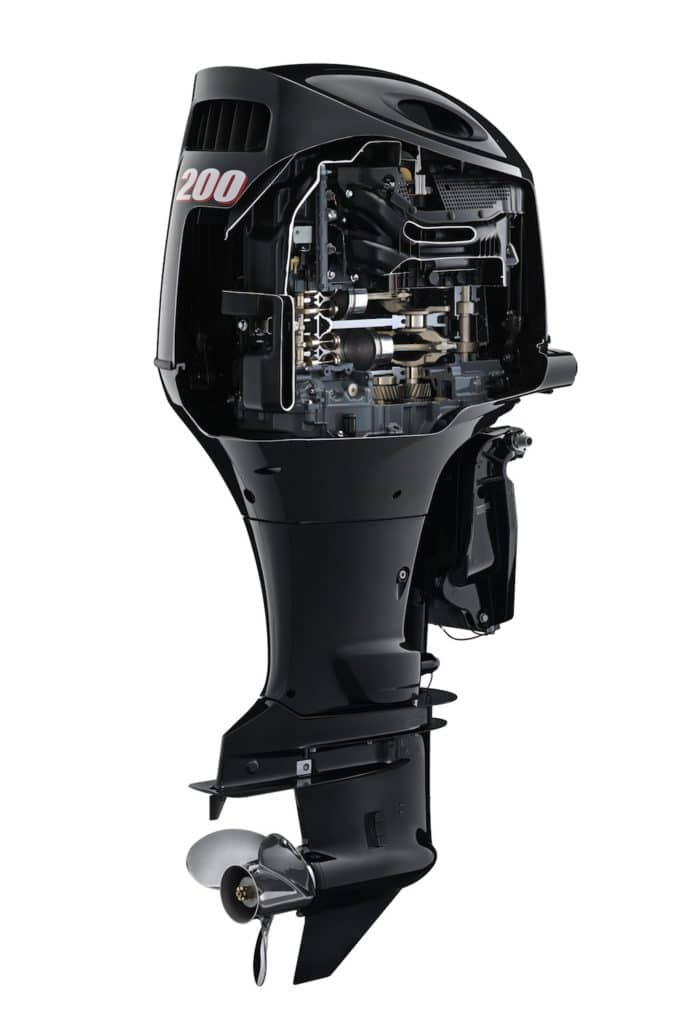
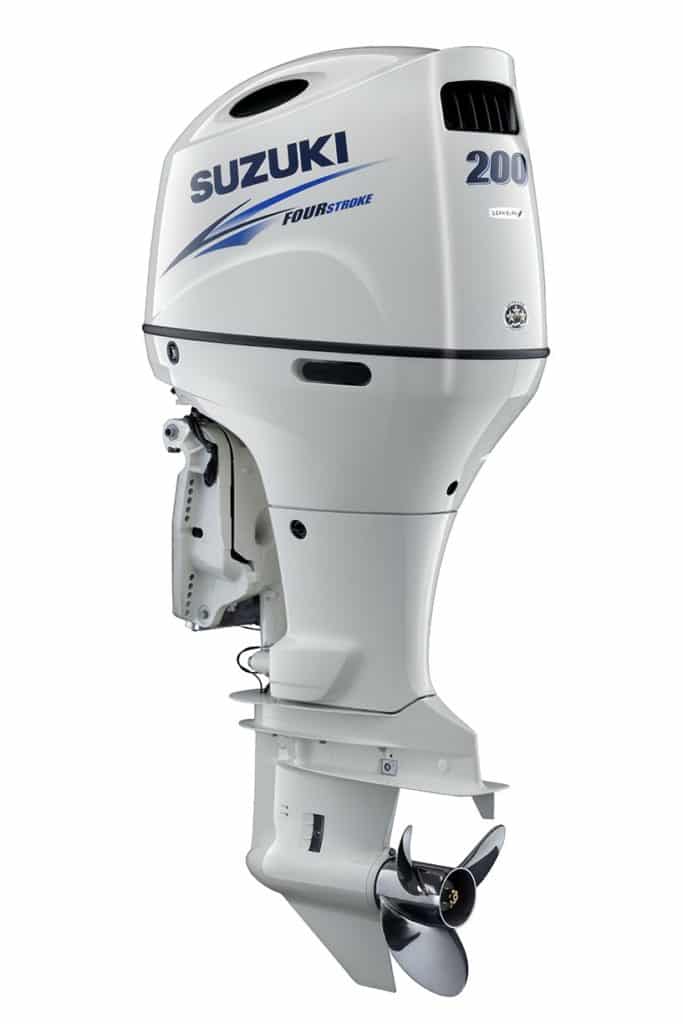
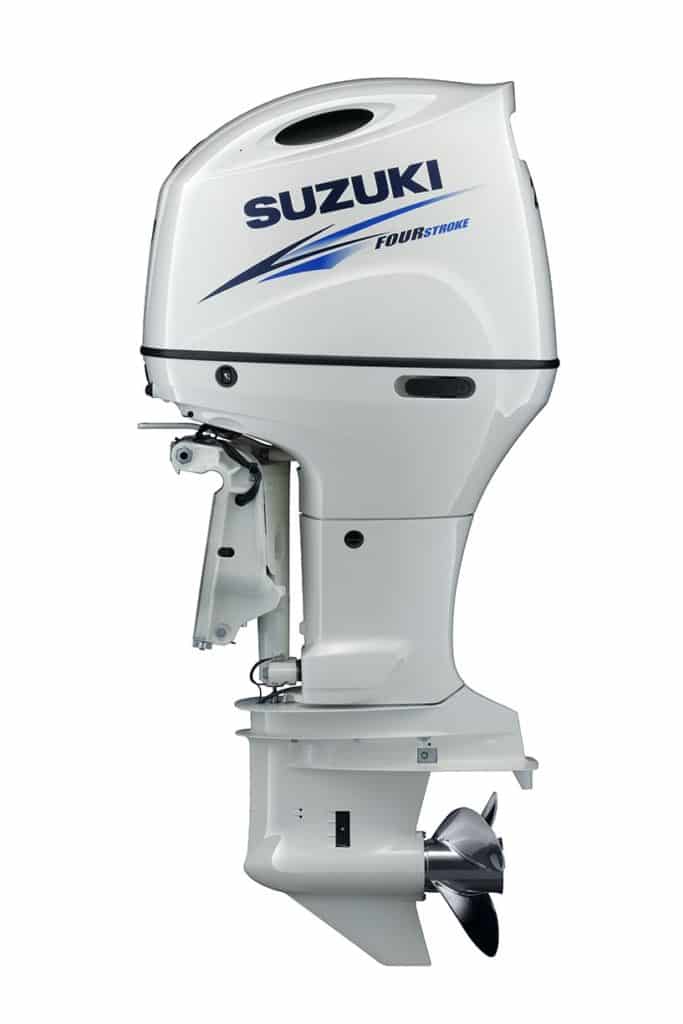
Displacing 175 cubic inches, Suzuki Marine’s new series of compact 200 hp outboards features inline four-cylinder blocks and boasts some cool features. I ran the new engines outside the Ocean Reef Club in Key Largo, Florida on a Key West 219FS, with a single engine, and on a new Twin Vee 31 Ocean Cat with a pair 200s.
Suzuki engineered the DF200A with a 10.3:1 compression ratio, electronic fuel injection and a special hood to provide cooler air directly to the engine’s long-track tuned intake manifold. Four valves per cylinder — two intake and two exhaust – allow the engine to breathe more efficiently. Suzuki’s Lean Burn Technology optimizes the fuel-to-air mixture once you establish a cruising rpm. Knock, O2 and water-detection sensors monitor and control engine operating parameters and help prevent engine damage from poor fuel, rarified air at high-altitudes and water in the gas.
The compact nature of the inline design (versus a wider V-6 block) lends itself well to twin-engine installations on a V-hull. Secondly, the lighter mass of the DF200A (versus the V-6 version) means that you can repower older boats (originally designed for lighter two-stroke outboards) with this new generation of four-strokes.
Read About Other Suzuki Outboard Engines
Yamaha four-cylinder F200 outboards offer the same the advantage, but the Suzuki’s DF200A has 12 more cubic inches of displacement. Yamaha’s F200 weighs 487 pound versus the Suzuki DF200A mass of 498 pounds, which is still 12 percent less than Suzuki’s 200 hp V-6.
Suzuki plans to offer the new engines with both digital (DF200AP) and mechanical (DF200A) control systems. The AP model will also include Suzuki’s Selective Rotation for multi-engine installations and keyless ignition.
The Key West 219FS with a white DF200A (Suzuki offers many of its engines now in either winter white or it traditional charcoal) accelerated from zero to planing speed in 5.7 seconds and to 30 mph in 10.7 seconds with three adult males and half-tank of gasoline. Top speed was 44.8 mph at 6,000 rpm. We were turning a 1.5-inch by 16-inch three-blade stainless steel prop.
With the Twin Vee 31 Ocean Cat running twin DF200A outboards with 20-inch by 16-inch three-blade stainless props, the top speed averaged 43.8 mph with six adult males aboard. We were asked not to gather performance numbers at this time, as Suzuki is still fine-tuning the digital mapping and propping of these engine. Once production engines are out (expected sometime this fall), we plan on bringing you complete performance data.
Meanwhile, Suzuki has joined Yamaha in offering alternatives to V-6-based 200 hp outboards, and that’s good news for boaters looking for more compact models for twin-engine installations or lighter outboards for repowered older boats originally designed for two-strokes.

